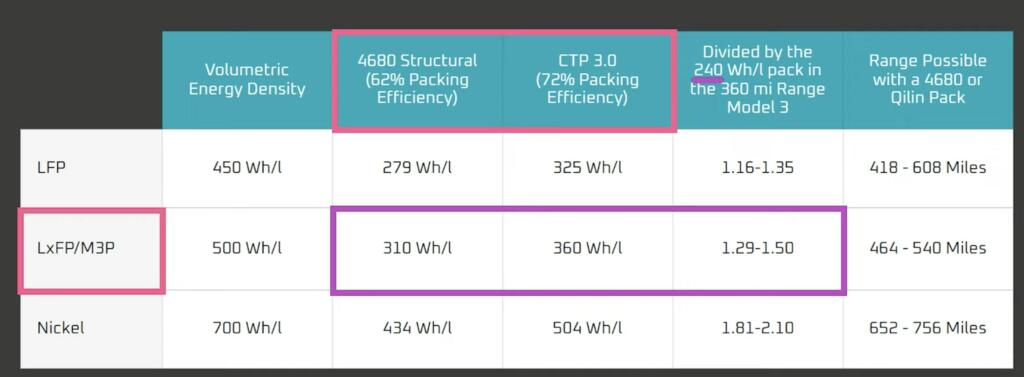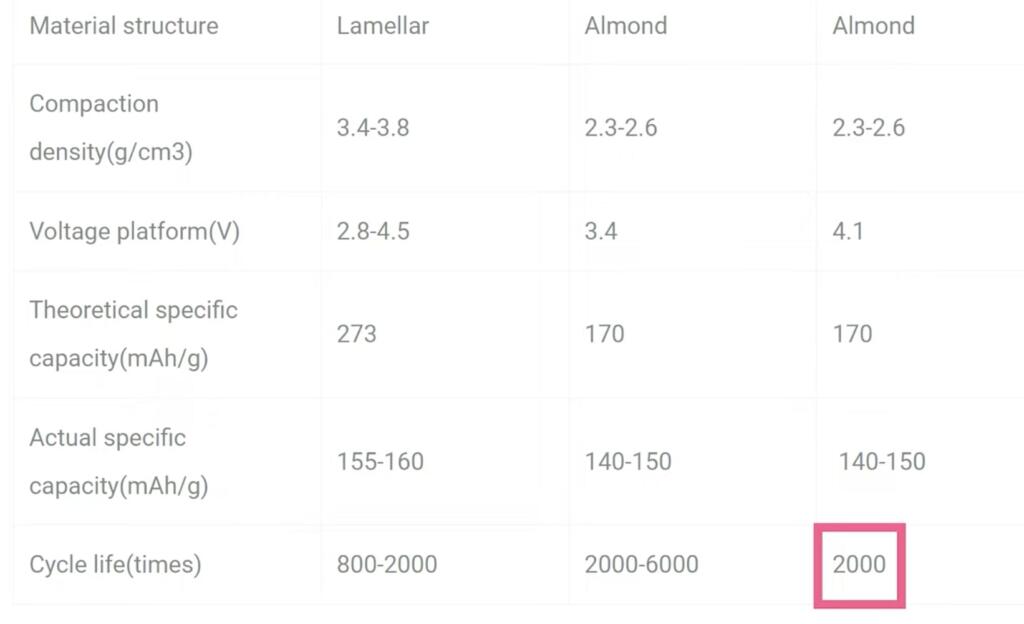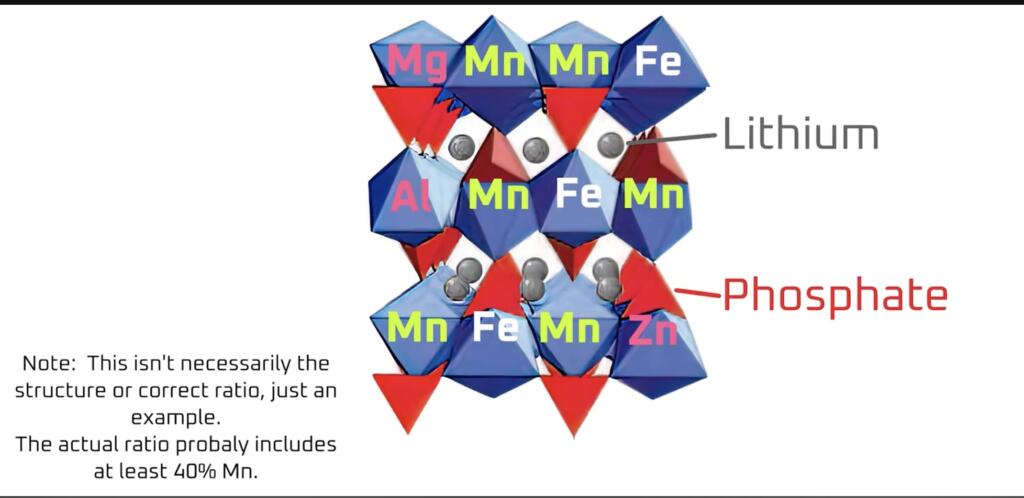Jordan Giesige has unraveled the composition, cost and performance of the CATL M3P battery.
CATL is the largest EV battery maker in the world with about 36% global market share. CATL is launching its new M3P battery but there has been confusion about what the M3P battery composition, cost and performance.
CATL is likely launching a dominant new battery. Especially as Tesla is believed to be including the M3P in the new Model 3. It is like Nvidia launching a new chip or Apple launching a new smartphone. CATL batteries matter.
Jordan Giesige is a very thorough researcher on the battery technology and processes for electric cars. He has the youtube channel the Limiting Factor.
Jordan’s conclusions:
* M3P is a variant of a Lithium Manganese Iron Phosphate battery. Iron LFP batteries have the most market share and are the lowest cost EV battery.
* M3P is slightly more expensive than LFP batteries but will have about 15% better performance.
* M3P will give cars about 10% more range than cars with LFP battery packs
* M3P can give cars the same range as nickel battery cars but at 15% lower cost for the battery pack
The gamechanging CATL M3P battery can lower the cost of versions of the Model 3 and Y by $3000 and versions of the Model S and X by $5000.






Tesla lowering costs increasing the total addressable market. This means they can increase sales by offering substantially better value cars. Battery costs improvements are a major part of Tesla cost reduction.
If Jordan’s analysis of M3P composition, cost and performance are correct then this would be a major part of Tesla lowering costs to enable more sales.

The Tesla Model S and Model X dropping prices $10,000 on a shorter range starting version by seems to double the market for those vehicles as well.

Brian Wang is a Futurist Thought Leader and a popular Science blogger with 1 million readers per month. His blog Nextbigfuture.com is ranked #1 Science News Blog. It covers many disruptive technology and trends including Space, Robotics, Artificial Intelligence, Medicine, Anti-aging Biotechnology, and Nanotechnology.
Known for identifying cutting edge technologies, he is currently a Co-Founder of a startup and fundraiser for high potential early-stage companies. He is the Head of Research for Allocations for deep technology investments and an Angel Investor at Space Angels.
A frequent speaker at corporations, he has been a TEDx speaker, a Singularity University speaker and guest at numerous interviews for radio and podcasts. He is open to public speaking and advising engagements.


The average efficiency of an ICE is ~ 20%.
Think about that for just 1 minute. Of the 100% of the fuel you put in your car, 80% of that fuel is wasted to the atmosphere as heat.
What else do you knowingly pay for and willingly waste
80% of?
A grand total of nothing.
The internal combustion engine is a debacle of wasted energy.
you are right about higher energy loss but even with that it is still less pollution emitted to atmosphere during vehicle with ICE life comparing to electric car (considering huge emission during battery manufacturing process and need of its replacement after 6-10 years of use).
Your argument has only 1 flaw, the energy from ev is mostly produced with unrenewable resources even in countries which deeply adopted them. So raising the ev output unless we find a permanent solutions in energy production and distribution is just a phrase, the balance we have today for which is still convenient to buy ev in most cases it’s because of the minute market share they actually comprise right now
You forget the efficiency of a typical power plant to generate the electricity…
A computer wastes everything as heat. Not sure of the exact figure but it doesn’t depend on many factors compared to an ICE.
e.g. 4-cylinder turbo charged car using gasoline on a cold winter day where lots of engine heat goes to compartment… Vs a Tesla… That’s obviously an ideal situation to argue but it’s not invalid in certain use cases.
Most electricity is produced from fossil fuels, making the EV a much less efficient way of burning fuel than an ice vehicle.
CATL Shenxing LFP battery seems to be the true Game Changer.
https://medium.com/predict/catls-latest-battery-is-a-massive-leap-in-the-right-direction-da54b97273f3
Safety is the game changer. We need batteries that don’t spontaneously combust and burn your house down.
I seem to recall the cruise control relay (a peripheral component) on Ford trucks would overheat, while the vehicle was parked in the garage, and burn the house down. Not even power train related, a always energized relay! Don’t throw stones in glass houses.
Far from “Game Changer” Brian.
What we are seeing is slight to moderate improvements in most battery functions:
Energy density, power density, cost, safety, charge time, longevity etc.
A game changer would be
1000 miles/charge, 1 hour charge time, $10/kwh etc
So right now, my car gets great milage. I forget what, but I can get ~164 miles and not quite be down to half a tank. And that’s in the 100+ degree Texas heat recently with the AC at 60 degrees and using bluetooth, etc, traveling mostly nonstop between 50 to 75 MPH.
My car’s tank can fill up to around 321 miles (the actual tank capacity currently escapes me; thanks, hard root beer lol).
If I get an EV, that’s the consistent performance I need out of it. When we hit that point, I’m all in.
My 2017 Model S , with 130k miles get 270 actual miles on a full charge . Driving highway speeds , 100 degree Texas heat as well . It’s a 90d
Ah thanks, I could swing that! Buc-ee’s is also close, so people have Teslas over here because they just drive over there and charge them.
You charge nightly. Changes equation completely.
I’m not too far behind in Mach E With extended battery… I fill to about 90% and get around 270 I assume the other 10% would get me too 297mi of range. Not to shabby if I would have gotten the Route 1 I would be over 300 miles of range.
but you don’t have a full tank every morning. people want 1:1 gas:EV missing the point that EVs are already superior in many aspects.
very long range is just a bad substitute for reliable fast charging available on every major highway/interstate